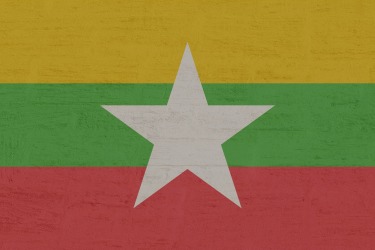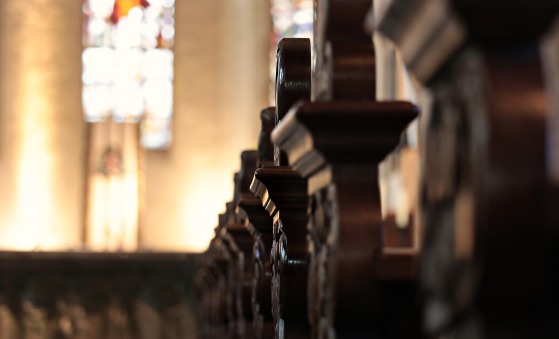
Approximately 15 Christians were among the 40 Rohingya refugees from India who are now confirmed safe under the protection of Myanmar’s National Unity Government (NUG), according to a report from the Associated Press on May 17, 2025. The refugees had been allegedly detained in Delhi, flown to the Andaman Islands, and then forced into the sea near the Myanmar-Thailand maritime border by Indian authorities.
The incident has drawn strong international condemnation. Thomas Andrews, the United Nations Special Rapporteur on human rights in Myanmar, called India’s action a “blatant disregard for the lives and safety of those who require international protection” and “nothing short of outrageous.” The UN Commissioner for Human Rights announced on May 16 that it had appointed a UN expert to investigate what it termed “unconscionable, unacceptable acts.”
The People’s Union for Civil Liberties (PUCL) issued a scathing statement on May 15, describing the operation as “kidnapping, torturing, and forcibly deporting refugees registered with the United Nations High Commissioner for Refugees” in violation of domestic and international law.
“The fact that the refugees thrown into international waters belong to the Rohingya community, which is one of the world’s most persecuted minorities, indicates that the Indian Government is even prepared to cast aside its obligations under one of the most important significant human rights treaty it has ratified, namely the Convention on the Prevention and Punishment of Genocide of 1948,” the PUCL stated.
The chain of events began on February 26 when Delhi Police’s Vikaspuri Dossier Cell visited Rohingya homes in Hastsal and Vikaspuri to verify addresses. On May 3, police drew up a list of 14 people for verification at Dwarka, where they were photographed.
On May 6, Delhi Police conducted raids across five locations in the capital - Hastasal, Uttam Nagar, Madanpur Khadar, Vikaspuri, and Shaheen Bagh - detaining 43 Rohingya refugees. Christian Rohingya were instructed to report to the Vikaspuri police station, while officers visited the homes of others.
“All of us were taken to the Dwarka Dossier Cell where our fingerprint impressions were taken,” a Christian Rohingya told Northeast News. The Christian Rohingya community in Delhi, which numbers about 140 according to Northeast News, was particularly affected by these actions.
After being held at various police stations for over 24 hours, the refugees were transferred to the Inderlok detention centre in Delhi on May 7, allegedly under the pretext of collecting biometric data. On that day, a Christian Rohingya who took refuge in an undisclosed location told Northeast News: “Around 11:30 am, the police rounded up 15 Christian and four Muslim Rohingya, made them board two buses. Police escorts were placed at the front and rear of the buses which then reportedly headed for the airport. We fear these people have been put on flights for Myanmar.”
Northeast News later reported the refugees were not taken to Delhi’s Indira Gandhi International Airport as initially suspected, but to Hindon Air Force Base. From there, they were flown to Port Blair in the Andaman and Nicobar Islands, bringing them significantly closer to Myanmar. Upon arrival, they allegedly had their UNHCR identity cards, money, and other possessions confiscated before being placed aboard naval vessels.
Reports indicated the detained group included women, children, elderly individuals, and people with serious illnesses. The PUCL stated that “children as young as 15, female minors as young as 16, senior citizens up to 66 years old, and people suffering from cancer and other ailments were among those abandoned in the sea.”
A survivor’s audio recording shared by the PUCL stated: “We were taken to Port Blair, in the Andaman and Nicobar Islands, aboard an army aircraft. Later, we were forcibly put onto naval ships with our hands tied and eyes blindfolded. We remained in that condition for the entire journey. We were tortured aboard the naval ships, beaten brutally, and interrogated. We were accused of involvement in the Pahalgam terrorist attack in Jammu and Kashmir.”
On May 8, after several hours at sea, their restraints and blindfolds were reportedly removed. They were then allegedly forced off the ship and into the sea, each given a life jacket. The refugees swam toward the nearest shore and discovered they had been returned to Myanmar’s Tanintharyi region, approximately 1530 km south of their original hometown of Buthidaung in Rakhine State.
That evening, the deportees managed to borrow phones from local fishermen to contact their families in Delhi. In Myanmar, the refugees encountered a local defence force before being taken under the protection of the People’s Defence Force, the armed wing of Myanmar’s National Unity Government.
Supreme Court advocate Colin Gonsalves told Northeast News the deportation was “inhuman” and emphasized that the Rohingya are protected by Article 21 of the Indian Constitution. He explained that the principle of non-refoulement “prohibits a country from returning a person to a country where they face a genuine risk of persecution, torture, or other gross human rights violations.”
The deportation case impacts India’s broader Rohingya refugee population, estimated at 40,000 people. These refugees, both Christians and Muslims, have sought safety in India after fleeing persecution in Myanmar.
Refugees have filed a petition in India’s Supreme Court seeking to declare such “forced and clandestine” deportations unconstitutional. According to multiple news sources, the Indian government has not officially confirmed the deportations or commented on the method used.




